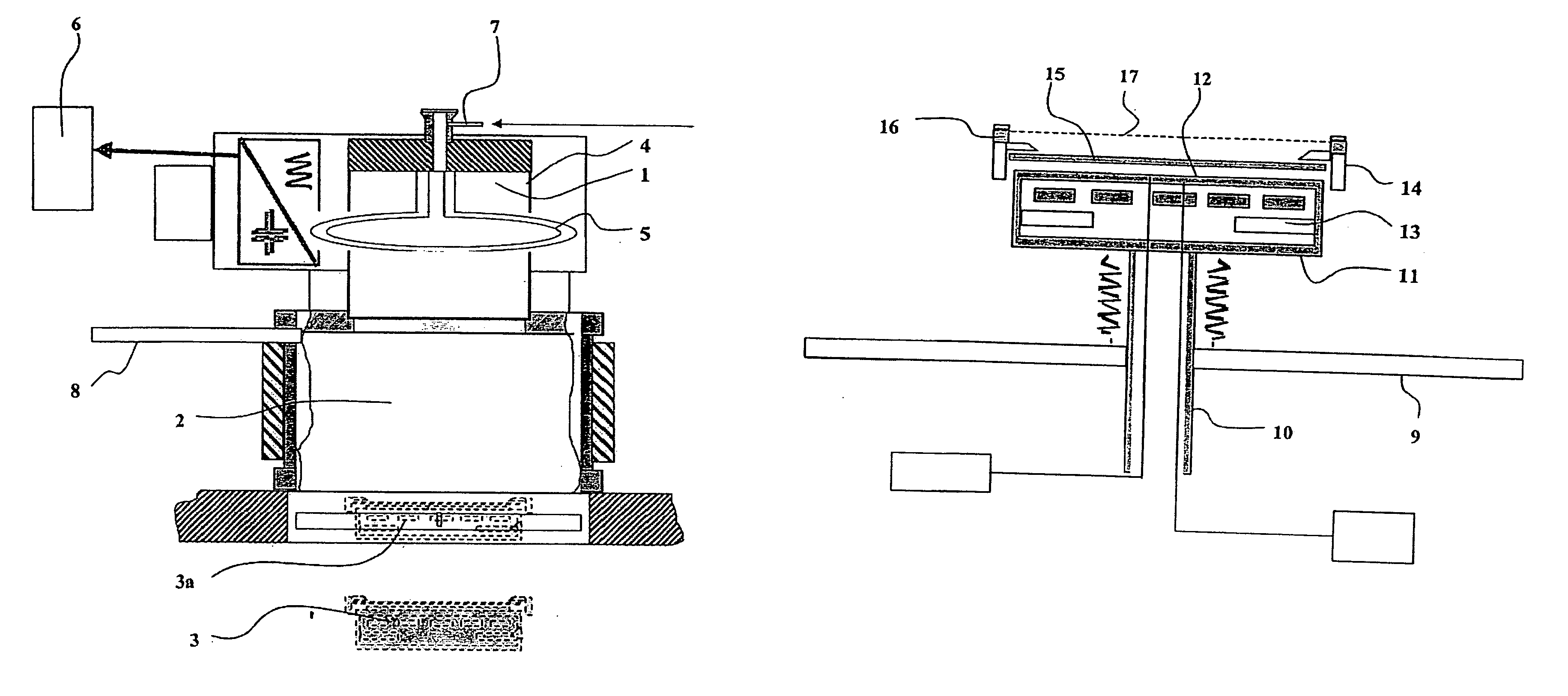Method and apparatus for non-aggressive plasma-enhanced vapor deposition of dielectric films
a dielectric film, plasma-enhanced technology, applied in chemical vapor deposition coatings, electric discharge tubes, coatings, etc., can solve the problems of unsuitability for use, the method cannot be used for substrates that can withstand high temperatures without significant degradation, and the effect of reducing the flow of charged particles
- Summary
- Abstract
- Description
- Claims
- Application Information
AI Technical Summary
Benefits of technology
Problems solved by technology
Method used
Image
Examples
Embodiment Construction
[0043] Reference is made initially to FIG. 1. Apparatus for plasma-enhanced chemical vapor deposition of a dielectric film comprises a plasma source 1, preferably a high-density ion source in order to be capable of operating properly at a lower operating temperature, followed by a diffusion chamber 2 having a substrate support 3 adapted to hold the substrate for treatment and to be engaged in the diffusion chamber 2, as shown in position 3a.
[0044] The plasma source 1 is constituted by an enclosure whose wall 4 is made of dielectric material, it is advantageously cylindrical in shape, being associated with a loop antenna 5 powered by a radiofrequency (RF) electrical generator 6. A gas inlet 7 is provided at the proximal end of the plasma source 1, i.e. at its end remote from the diffusion chamber 2.
[0045] The plasma source 1 communicates with the diffusion chamber 2 which is itself adapted to direct the plasma towards a substrate held on the substrate support in position 3a.
[0046]...
PUM
| Property | Measurement | Unit |
|---|---|---|
| Length | aaaaa | aaaaa |
| Dielectric polarization enthalpy | aaaaa | aaaaa |
| Density | aaaaa | aaaaa |
Abstract
Description
Claims
Application Information
 Login to View More
Login to View More - R&D
- Intellectual Property
- Life Sciences
- Materials
- Tech Scout
- Unparalleled Data Quality
- Higher Quality Content
- 60% Fewer Hallucinations
Browse by: Latest US Patents, China's latest patents, Technical Efficacy Thesaurus, Application Domain, Technology Topic, Popular Technical Reports.
© 2025 PatSnap. All rights reserved.Legal|Privacy policy|Modern Slavery Act Transparency Statement|Sitemap|About US| Contact US: help@patsnap.com



